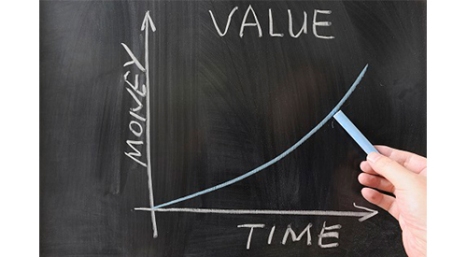A popular phrase that is you may have heard related to money and finance is: “A dollar today is worth more than a dollar tomorrow.” You may have heard of this phrase before, but have you ever wondered what this actually means? If there is one thing you take away from this post, it is that phrase because it is the foundation of the personal finance and money management. The time value of money is a concept that money available in present time (Today), is worth more in the future due to its earning capacity. Time value of money is a fundamental building block. But what does this mean, and why is it important to understand this?
First, let me explain Future value and present value.
Present Value: Present value is the current value of a future sum of money at a later date.
Future value: Future value is the nominal value of an asset at a specified date in the future.
The Scenario
Let’s say you won a lottery prize of $100,000. Would you prefer to receive it today or in two years? Most rational people would want to receive it today because you can use the money right away and secondly, you may realize $100,000 today will be worth more than $100,000 two years later, let me explain why.
Let’s say that you took the $100,000 in cash today. You decide to put that into a savings account that pays you 1% interest annually. One year later, that $100,000 will turn into $101,000. In other words, $100,000 dollars today is equal to $101,000 in one year time. Now let’s look at the second year. With compound interest, you will have $102,010 after the second year. This is because we take 1% on $101,000, the balance after year 1.
Let’s revisit the two options you had. In the second option, you could have received $100,000 in two years. If you can invest your money and earn 1% interest annually, you would need at least $102,010 to have the same equal value as the first option. Based on the assumptions above, $100,000 today is worth $102,010 in two years. If you look at it from a different angle, $102,010 in two years is worth $100,000 today. To revisit the second option, how much is it worth today if you receiving $100,000 in two years? We would work backwards here. If you guessed it would be less than $100,000 you are correct! It would be worth $98,029 using the same interest (discount) rate.

Let’s reverse the scenarios and look at the cost of living. If you were to planning to purchase a brand new car. The advertised price of the car is $30,000. The dealership offers you two options.
1) Purchase the car upfront with cash
2) Place a down payment and finance the car over 5 years at 3% annual interest rate, paying $400 a month.

Now most people would pick the second option because paying $30,000 at once is a lot of money! Most people are more comfortable paying about $400 a month over five years, as this option is more flexible and allows you to have more cash flow on hand to pay off other debts, mortgages and make other purchases. This also decreases risk of having cash constraints. Car dealerships know this, which is why often times they give a cash rebate if you purchase the vehicle upfront. Now, lets say if the dealership offers a $3,000 discount if you purchase the vehicle in full. This is where it gets more complicated, as it seems that first option is cheaper and will be saving you more money in the long run. However, this is not always the case as 3% may seem like a low interest rate for the cash liquidity gained from financing. For example, choosing to finance the vehicle and invest the $30,000 in the stock market and earn 7% return over five years. Or you can finance the vehicle and use the cash kept to pay off high interest debt such as credit card debt, personal line or credit or other loans that is greater than the financing costs of the vehicle (3%). Other factors such as: risk, time horizon, opportunity cost, credit score and personal debt,[SL1] has to be considered as each situation is different. You must know how to best manage your monetary assets to minimize your losses and maximize your gains!
Summary
Understand how time, whether it is a day, month, or year has value when talking about money, and this value is monetary. When making investments that spans multiple years, keep in mind the concept of present value and future value.

